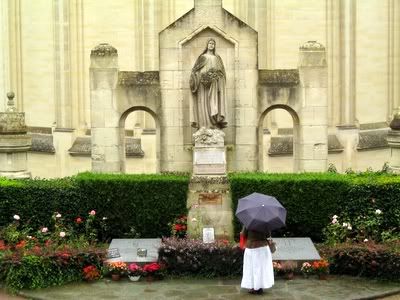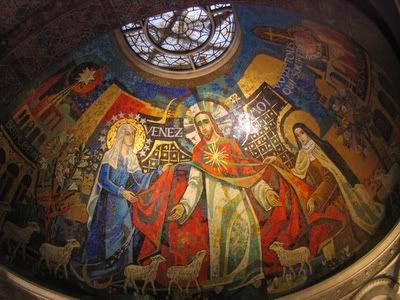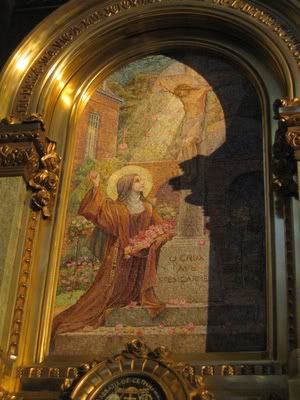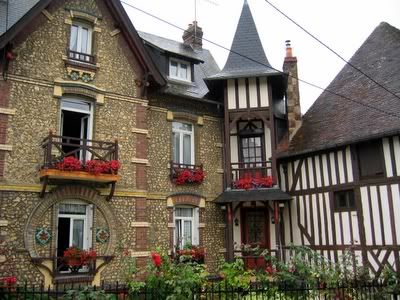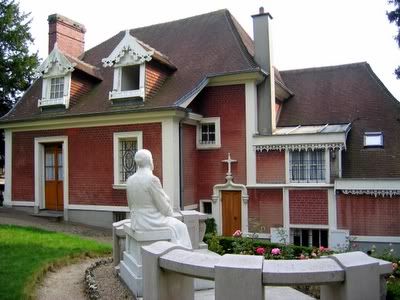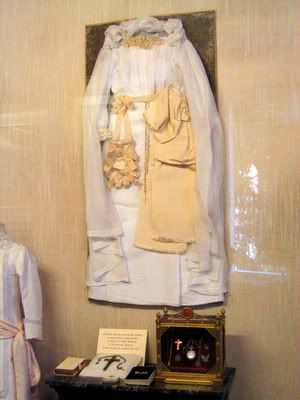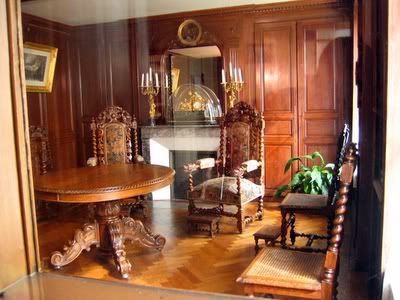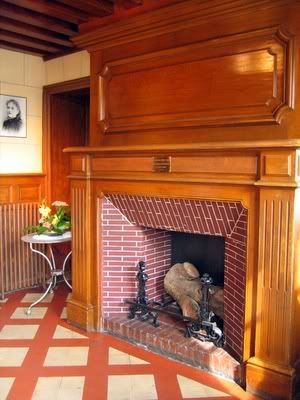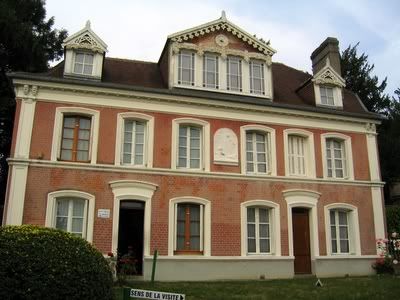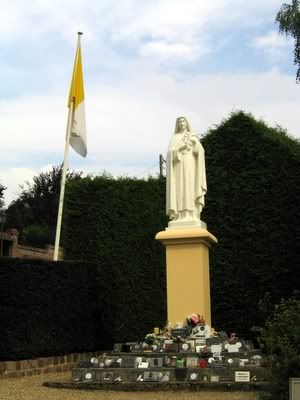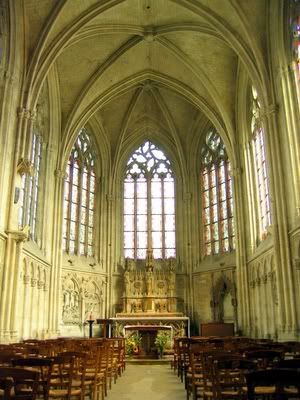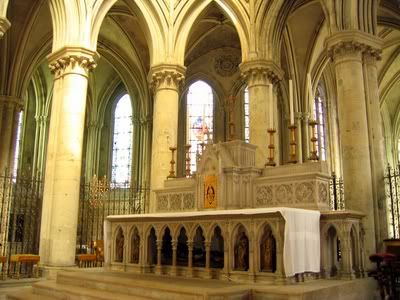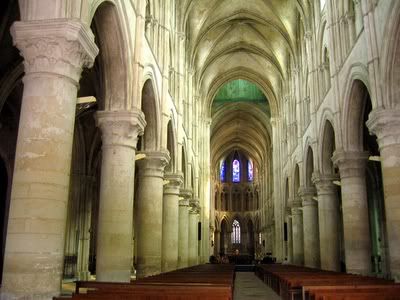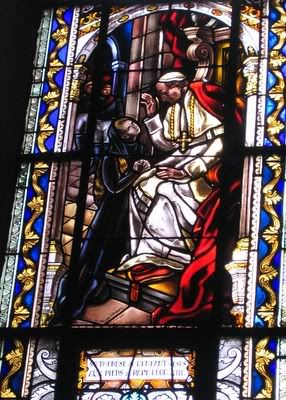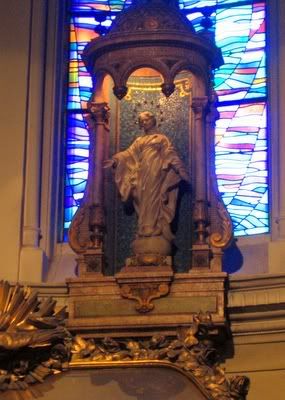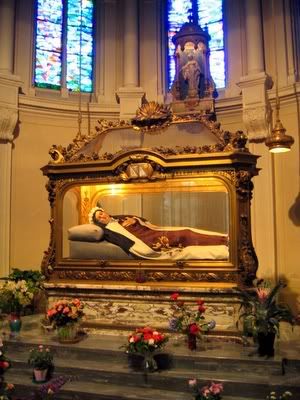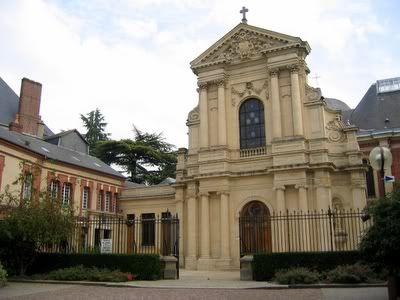Hello to everyone! Over the weekend I took the opportunity of being in northern France to take a train to the small town of Lisieux, in Normandy. I have had a fondness for St. Thérèse of Lisieux for some time now – I know some of you who are reading have an even deeper fondness and devotion for her, and so please know that I went to Lisieux not only for me, but for you as well! The joy that I had in being so near to her I prayed that you too would know in some way.
I will attempt to detail here a brief overview of my time in Lisieux, with more details in the photo descriptions. (of course… I took many photos! :)
The journey to Lisieux was a bit crazy, it was only 4 hours away from Nantes, but I had to switch trains three times… I was still not very comfortable with train travel, having only done “direct” trains to this point, and realizing that nowhere else in a foreign country do I seem to have as much trouble with the language with traveling on the trains – now however, I have “won” my victory and after so much hopping around and last-minute planning I think I finally have lost my fear of trains! I arrived in Lisieux in the early afternoon on Friday, and the first thing was to find a place to sleep. The trip to Lisieux was kind of a last-minute idea, and I hadn’t had time to call and find a room anywhere, however, I had checked online and knew that the Sanctuary for St. Thérèse itself ran a couple of guesthouses – so I went first to check at their St. Thérèse Hermitage. Fantastic! I was able to get a room with my own bathroom overlooking the quiet courtyard and the Basilica above, with full pension (full meals) for only 39 euro a night. (I highly recommend this place for anyone or any group going to Lisieux!) With housing taken care of, I was now free to explore the town and go on my own Thérèse pilgrimage.
The Hermitage is right by the Carmel monastery itself, so I went there first – I had no idea if St. Thérèse was actually there or not (I did not know where she was buried yet!) but as soon as you walk into the chapel there is no mistake – she is there (well, her mortal remains anyway!). The Carmel chapel is the same one that was there in the day of Thérèse, but it has now become almost entirely decorated with images and items related to Thérèse – everything from the side altars to the stained glass windows is Thérèse. The body of Thérèse is honored in a side chapel that is (unfortunately) completely separated from the main nave of the chapel, behind wrought iron gates. This is because the chapel (like most chapels of cloistered convents or monasteries) is itself in the shape of an L, with one nave being the public chapel and the other nave being the private chapel of the congregation (the connection is the sanctuary, so that both the religious and the public can participate in the Mass). The chapel for Thérèse seems to have been built into the inner corner of the L, and is accessible from the private chapel only. Every once in awhile you will glimpse a silent sister coming out to rearrange the flowers and add new ones (the entire area of Thérèse’s tomb is covered in donated flower offerings and thanksgivings). The tomb of Thérèse itself is quite large, with her remains underneath a large glass case with a statue of her lying on her deathbed inside. Above, smiling down upon her is the original statue of Our Lady of the Smile (a version of the common Our Lady of Grace with outstretched arms) that was first owned by her father and then came to the convent with Thérèse’s sister Celine after their father’s death.
Also on Friday afternoon I walked to “Les Buissonnets”, the childhood home of Thérèse (when Thérèse was 4 years old, after her mother died, the Martins moved to Lisieux from Alençon). It is a charming home, and the odd thing is that as soon as I walked inside of it, I felt as though I had been there before! Then I realized, the recent movie “Thérèse” that many of us went to see in America was very close to reality – the rooms that we saw in the movie are matched almost perfectly with the actual rooms and layout. To be actually walking through these rooms myself was a bit unsettling at first!
I ended Friday with a visit to the Cathedral of St. Pierre (also the parish church of Thérèse) for Mass. The Cathedral is typical Gothic for the region, from the 12th century (actually I do not think it is really a “cathedral” any longer; I do not think it has been a see since the French Revolution, I think Bayoux now has “the” cathedral). There are many traces of Thérèse here, from the confessional that she received her first confession to the high altar that her father donated (!) to the church, to the side chapel that her family used to attend Mass every Sunday, to the chapel that she attended daily Mass. Along the side of the Cathedral are some beautiful gardens. Gardens, actually, are all over Lisieux, but I am not sure whether Lisieux has always been known for its flowers or if it has only sprung up in response to the fame of its “Little Flower”…
On Saturday I went to Mass at Carmel and then spent the day in “retreat” – there were other places to “see” regarding Thérèse but instead I stayed at Thérèse’s tomb for awhile to pray and then went for a walk around the town. It was glorious to just “be” for awhile and not to play tourist. The town of Lisieux is a very quiet town, though it is larger and more modern than I had thought it would be, with a complete “downtown” full of chic shops and electronics warehouses. It still retains much of its charm however, and the pace of life is far slower than it is in the more urban areas (like Paris and, to a lesser extent, Nantes). And it is much cheaper than the cities!! I was very happy to discover that everything from food to clothes was far cheaper, you can get a great meal in Lisieux for around 7 euro, for the same food in Paris I’m sure you would spend at least 15 euro.
Up on the hill above the main part of the town is a massive Basilica built in honor of St. Thérèse (construction from 1929-1954), which is very beautifully covered in mosaics of the Trinity, Mary and the saints, and of course St. Thérèse. In the main aisle of the Basilica there is a reliquary that contains the bones of Thérèse’s right arm – a gift from Pope Pius XI (!). The Basilica itself is huge and massive, but in its own way it is definitely “modern” construction, you can tell that they tried to merge both the old Romanesque architecture with more “up to date” designs… For example, the statues and church “furniture” (apart from the beauty of the reliquary, the high altar, and a traditional statue of Thérèse) are done somewhat vaguely, hinting more at the abstract than at the concrete (not quite as abstract as the truly modern art, but when you think that most of this stuff was probably done from the 1950s-1980s it makes sense). I must say, however, with regards to the liturgy, the Basilica astounded me. I was expecting Sunday Mass to be “modern” as well, but instead the Mass was a sung “high” Mass, with the interesting twist of the Creed sung in Latin! (Kyrie and Agnus Dei also Latin, none truly “chanted” however)
All that being said, which may be simply a matter of artistic taste, I do not think that the Basilica is really an adequate tribute to Thérèse herself, who was so content with being little. There is nothing little about this church, and while some of the ancient churches that I have seen (and not-so-ancient – like our own Cathedral of St. Paul) have been big and yet somehow maintained a sense of the mystery and transcendent, this Basilica seems intent on removing the veil between divinity and humanity. Hmmm. I am not sure exactly how to explain this.
Perhaps one way to describe this is to give you my thoughts on what is WRONG with Lisieux, as I think the Basilica is indicative of this. What some of these modern proponents of Thérèse seem to have tended to focus on is the very thing that Thérèse’s critics abhor – the idea that Thérèse is a sappy, insipid girl in love with the idea of love. This notion of Thérèse and love on both sides is completely wrong; the love that they see in Thérèse is not love at all, but a weak notion of the “global hug.” Thérèse was indeed in love, but not with an idea of love, but with Love Himself. And this Love is a STRONG Love, not a weak one, a demanding Love, not one absolutely “tolerant.” Now, I am not saying that the people in Lisieux who are involved with preserving the memory of Thérèse and all the sites of pilgrimage are all like this – but I did sense a very strong emphasis on the sappy side of Thérèse, even in the Carmel itself. It is clear that they love their Little Flower, but the question for me becomes whether or not, like the “historical Jesus”, they have fallen for the idea of Thérèse rather than Thérèse herself. What does this have to do with the design of the Basilica? I think that just as art imitates life, so too does architecture imitate philosophy. To the extent that the architecture of the Basilica seems “off” to me in uplifting the model of Thérèse as first of all a SAINT is, I think, the extent to which the people who designed the Basilica believed in the “modern” theology of the time. As such, there is a sense of uncertainty about the place that is evoked by the presence of so many “unfinished” (as I like to call them) pieces of art. When I see modern art, with all its vagueness and smooth lines, I see that the artist is afraid to commit to details – and as art imitates life, so then the artist himself may very well be afraid to commit to details, everything is relative. Details, as both our previous Holy Father John Paul II and our current Pope Benedict have said over and over again, matter, the Truth of our Faith is in the details, and these details are not relative, they are something that requires commitment to and for. Modern art is what I call relativism in action. Of course, Thérèse herself was completely unafraid of potentially “messy” details regarding God and faith – she feared for the salvation of souls with all her heart, and devoted her life, and her death, to the conversion of sinners. She did not mean general “sinners”, some vague block of humanity that “sins” – she meant, literally, sinners, those individuals who were in danger of losing their immortal soul’s happiness with the eternal and living God because of their immorality and disobedience. Glossing over this very direct focus of Thérèse in favor of the easy heaven is dangerous to the spiritual life, and all who claim to follow Thérèse need to step back and see whether or not they can say that they “choose everything,” like Thérèse did.
And that is perhaps the note that I should conclude on – to listen to Thérèse is to hear her when she says, time and time again, that “everything is grace” and “I choose everything,” – good or bad, moving or insipid, complete or incomplete. Nothing should stand in the way between ourselves and our Lord, but we should accept all things in the Lord and offer them back to Him with our love and trust. Even the bad shows us the Good, and the good that we are given is meant to lead us ever onwards towards the Good. "All things work for the good of those who love him."
Lisieux was a wonderful experience for me, please forgive my little soapbox rant... Truly, I encourage everyone who has a chance to go to Lisieux, it is certainly the town of Thérèse, the home of the Little Flower. The people are kind and generous, and there is so much beauty here, in the heart of Normandy, and of course there is the beauty of Thérèse herself, a soul in love with Love Himself.
+St. Thérèse of the Child Jesus and the Holy Face, pray for us!
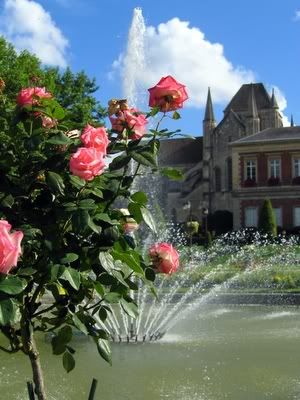
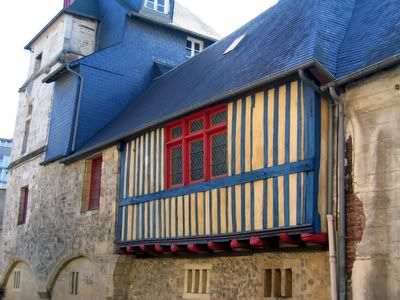
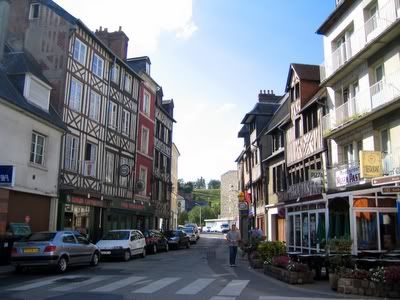



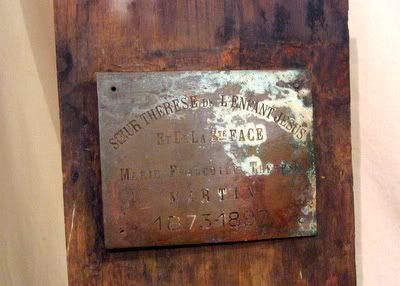
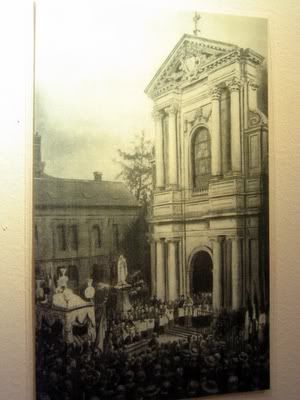

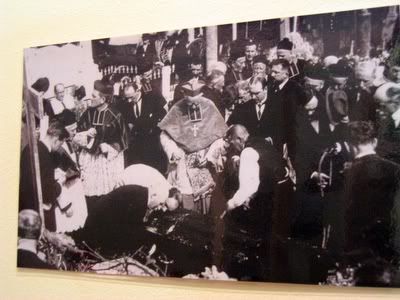

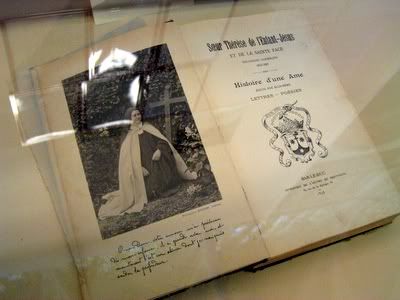



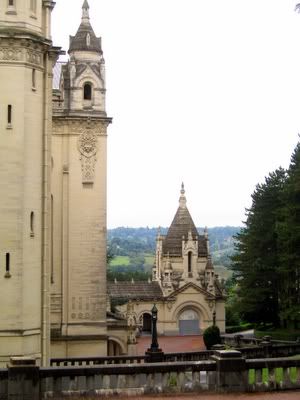 \
\